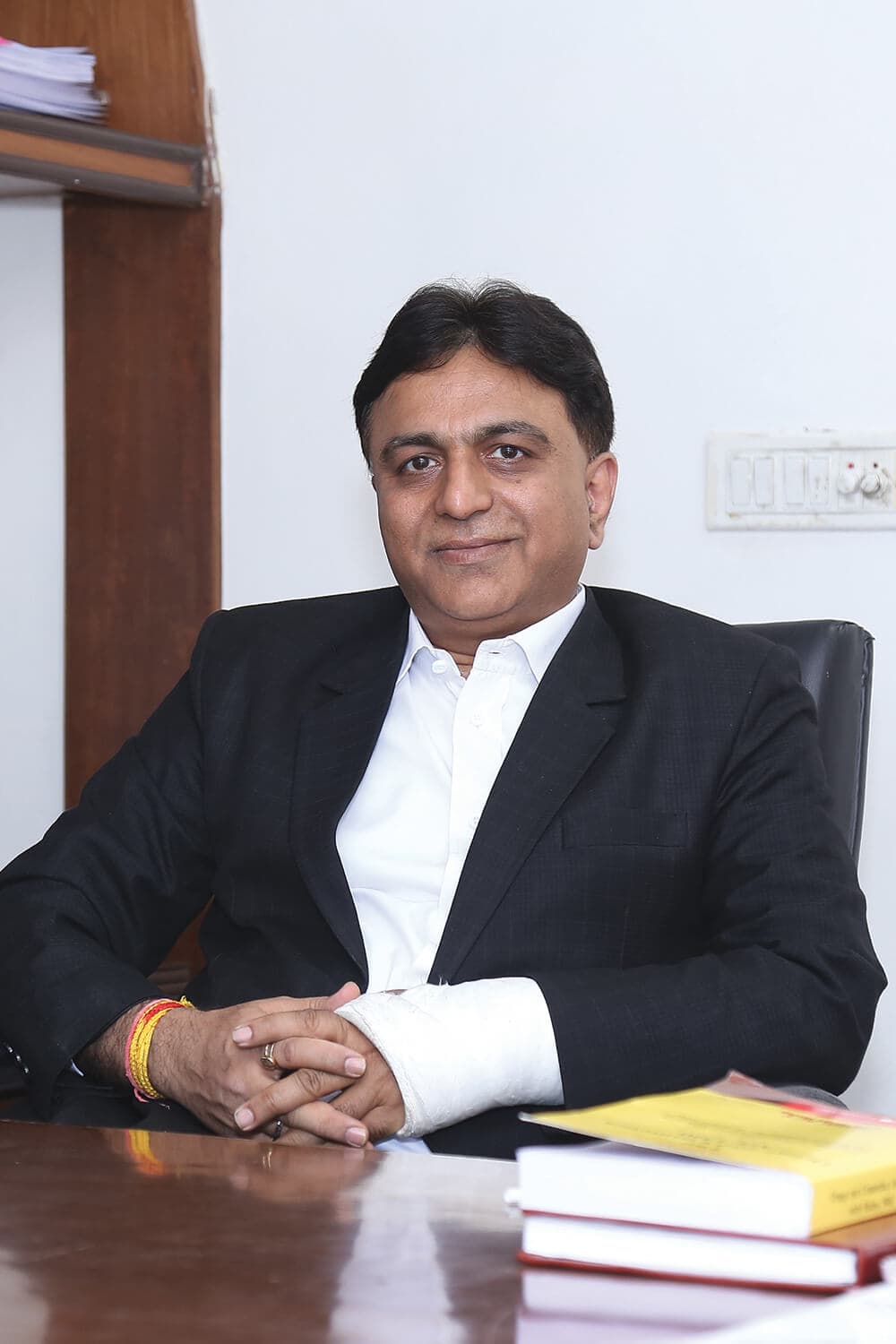
Dr V G Somani is the Joint Drugs Controller of India (JDCI) Medical Devices and the in-vitro diagnostics (IVD) Central Drugs Standard Control Organisation (CDSCO). He heads the regulation of medical devices, in-vitro diagnostics, stem cells and blood products. In this interview with Roche Diagram magazine, he discusses the regulatory industry and the future of diagnostics in India.
1. In your point of view, what role does diagnostics play in the healthcare ecosystem of India?
I personally feel that diagnostics is currently undervalued, considering the role it plays in determining the appropriate treatment pathway for patients. Diagnostics tends to play a behind-the-scenes role, like in a movie. The hero and heroines tend to get the limelight, but the directors and script-writers remain in the background even though they laid the foundation for the success of the movie.
Diagnostics is like that currently, but this perception is changing favourably. Awareness about the importance of diagnostics is increasing. As patients become increasingly educated and rational, they want clearer information about their health. This provides the push for physicians to rely on scientific diagnoses rather than purely having clinical diagnoses.
2. What role do regulators play in changing this perception?
From the regulator’s point of view, we are advocating that products should be used for the approved indications. We are also strengthening regulations for the use of certain diagnostics in critical diseases. For example, there are more restrictions on antibiotics, and physicians can only use them after a diagnosis is made. We are utilising whatever regulatory tools are available to us for the appropriate use of drugs after a proper diagnosis. Laboratories are seen as a ‘support’ service, when in reality we are so much more than that.
3. India’s economic growth and the rising middle class means there will be greater pressure on healthcare services, including diagnostic laboratories. What challenges do you foresee, and how can these be tackled?
Yes, there is pressure on healthcare services and labs and there should be. With government investment in schemes like Ayushman Bharat (India’s National Health Protection Scheme), people will expect quality services across the board. The onus is on each institution to maintain these quality standards when they are implemented. The brick-and-mortar clinics’ success will depend on the quality of the services they provide to their patients. Hospital chains will face the challenge of balancing quality and affordable services to remain competitive in the market. People now want easy accessibility to quality health services, thus the challenge for healthcare organisations is to manage patients’ expectations in a way that balances time, quality and affordability of diagnosis through diagnostics.
4. The World Health Organization (WHO) released the first-ever Essential Diagnostic List (EDL). How do you think this will stack up against India’s Ayushman Bharat?
The WHO’s EDL is an extremely useful list for Ayushman Bharat that will help us align on what diagnostics to include in our programme. It will also give health providers greater clarity on what kinds of diagnostics India can expect in the next five years. Ayushman Bharat is providing a health technology assessment, as well as a list of essential diagnostics at the primary and secondary healthcare centres, in consultation with the WHO.
5. What does the future hold for the diagnostics industry in India?
The future of the diagnostics industry is very bright. We work with a range of stakeholders such as scientists, doctors, the WHO, and Indian Council of Medical Research (ICMR) to determine which diagnostic tests should be available at the primary, secondary and tertiary levels of our healthcare system. We recognise that diagnostics is required in totality – not only do we need the tests, we also need skilled people who know how to use these tests. Ayushman Bharat is focusing on this aspect, and we are intending to build up both the services and the technical skills required to improve the quality of diagnostic services in India.
6. We have started to see risk-based regulation unfolding in the EU and India is taking its first steps towards that approach. What are your views on this?
Challenges will arise in a few situations – during emergency and epidemic situations, when there are breakthrough technologies, and lastly when there are unmet needs. In the risk-based model, we will utilise enforcement if there is more risk from the lack of compliance or data from particular operators or products. For these operators and products, we will keep them on surveillance. At the same time, we are heading towards flexible regulations based on need and risk. Therefore, not every product will have the rigour of inspection and testing. For example, if Zika breaks out in India tomorrow, we will accelerate our processes for medicines and vaccines diagnostics. If there are certain requirements and if we are required to form special committees for it, we will do it.
7. How does the regulatory framework in India work together with other stakeholders in the industry?
It is important that our framework balances mainstream accessibility and quality of diagnostic tests across India. We have to be flexible. If there is an unmet need that is important to public health, we can take a balanced view to expedite that availability and accessibility for these tests. However, if there are already tests in the market, quality becomes more important and we will take this risk-and-need-based approach to evaluate its essentiality and desirability. People need to be confident of the quality of diagnostics, and new regulations aim to ensure this standard of care.
8. India launched the Medical Devices Rules (MDR) in 2017. What do you hope to accomplish with this regulation?
The first is that MDR should allow an India-specific scheme to complement existing global regulations and mechanisms. Secondly, transparency and accountability are important, and we can increase transparency and accountability by having online systems and platforms. Once everything is online and complementary to global regulations, we will see the dual benefit of Indian products being accepted and accessible to other people outside of India and vice versa, as they comply to the same standards and quality.
9. What can other countries learn from this initiative?
I think others can learn how we are creating a system that aligns with global standards. We are implementing comprehensive approaches swiftly, including moving from offline to online systems. A lot of the progress can be attributed to bold political steps and working in sync with government stakeholders, local, and international businesses. All this, coupled with regulatory and logistic reforms, provide better health services to the public.
10. What are your interests outside of your regulatory work?
I like to travel and to share experiences with people. Fortunately, my job not only gives me the opportunity to travel, it also gives me the opportunity to share my ideas, and meet other professionals passionate about their work.














